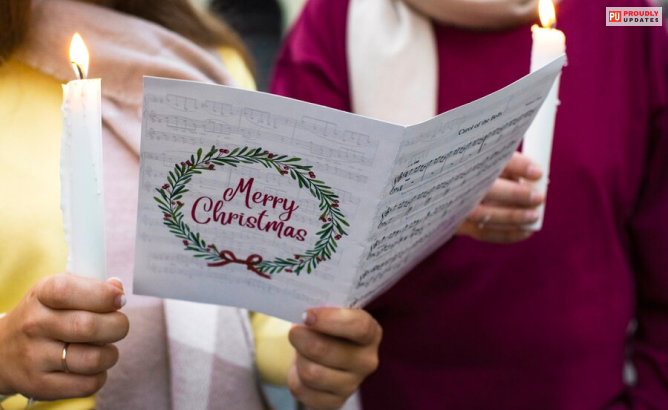
The “12 Days of Christmas” is a popular and festive holiday song that by singing and celebrating for centuries. The song, with its catchy tune and repetitive structure, has become a staple in Christmas celebrations around the world.
Beyond its surface-level entertainment value, the “12 Days of Christmas” carries a rich history and symbolism that traces back to medieval Europe.
12 Days Of Christmas: The Origin Story Of The Carol

The origins of the “12 Days of Christmas” can be trace back to England in the 16th century. The earliest known version of the song appeared in a children’s book titled “Mirth Without Mischief” publish in 1780.
It is believe that the song predates this publication and has its roots in an oral tradition of Christmas caroling and festivities.
The Meaning Of “12 Days”: What 12 Days?

The “12 Days of Christmas” traditionally refer to the period between Christmas Day, celebrated on December 25th, and the Feast of the Epiphany, observe on January 6th.
This period is call the Christmastide or Twelvetide. The Feast of the Epiphany commemorates the visit of the Magi, or Wise Men, to the infant Jesus, as narrated in the Gospel of Matthew.
What Do The 12 Days Of Christmas Gifts Symbolise?

The most distinctive feature of the song is its repetition of gifts given over the twelve days. Each verse introduces a new gift, creating a cumulative effect.
The gifts are often interpret allegorically, with various theories suggesting hidden meanings. One popular interpretation associates the gifts with Christian teachings:
- A Partridge in a Pear Tree: Symbolizes Jesus Christ.
- Two Turtle Doves: Represents the Old and New Testaments.
- Three French Hens: Symbolize faith, hope, and charity.
- Four Calling Birds: Represent the four Gospels: Matthew, Mark, Luke, and John.
- Five Gold Rings: Symbolize the first five books of the Old Testament.
- Six Geese a-Laying: Represent the six days of creation.
- Seven Swans a-Swimming: Symbolize the seven gifts of the Holy Spirit.
- Eight Maids a-Milking: Represent the eight Beatitudes.
- Nine Ladies Dancing: Symbolize the nine fruits of the Holy Spirit.
- Ten Lords a-Leaping: Represent the Ten Commandments.
- Eleven Pipers Piping: Symbolize the eleven faithful apostles.
- Twelve Drummers Drumming: Represent the twelve points of doctrine in the Apostle’s Creed.
12 Days Of Christmas: The Structure Of The Carol

The song’s structure follows a cumulative pattern, with each verse adding a new gift to the list. The gifts, often presented in a whimsical and extravagant manner, range from the partridge in a pear tree to twelve drummers drumming.
The lyrics are playful, they are believe by some to contain hidden meanings. Some theories propose that the gifts symbolize Christian teachings, with the partridge representing Jesus and the other gifts representing various virtues.
12 Days Of Christmas: Evolution Of The Carol

Over the centuries, the 12 Days of Christmas has undergone numerous variations and adaptations. Different cultures and communities have put their unique spin on the song, incorporating local traditions and customs.
Various artists have recorded their interpretations, infusing the carol with diverse musical styles and arrangements. This adaptability has contributed to the song’s enduring popularity and its ability to resonate with audiences across the globe.
1. Celebrations And Customs
The 12 Days of Christmas has inspired a plethora of customs and celebrations around the world. Some communities embrace the tradition of “Twelfth Night” on January 5th, marking the end of the Christmas season with feasting and revelry.
In some cultures, it is customary to exchange small gifts or engage in acts of kindness IN the twelve-day period. The song has influence the creation of elaborate Christmas decorations, with some enthusiasts decorating their homes with the 12 gifts depicted in the lyrics.
2. Modern Interpretation Of The Carol
In contemporary times, the 12 Days of Christmas continues to hold a special place in the hearts of people worldwide. It remains a cherished part of holiday playlists, and its whimsical lyrics evoke a sense of nostalgia and joy.
The song has been reimagining by artists spanning various genres, from classical to pop, ensuring its relevance for new generations. The advent of digital media and social platforms has facilitated the sharing of creative interpretations and performances, fostering a sense of community among fans of the song.
Wrapping Up!
Well, there you go; the 12 Days of Christmas, with its origins shrouded in the mists of time, has transcended generations to become a cherished holiday tradition.
From its humble beginnings in 18th-century England to its present-day global appeal, the song has evolved, adapted, and inspired a myriad of celebrations.
Read more…
Christmas Pickle: History Of Where It Came From?
Stocking Stuffers: What Are They And How Do You Stuff Them?
















